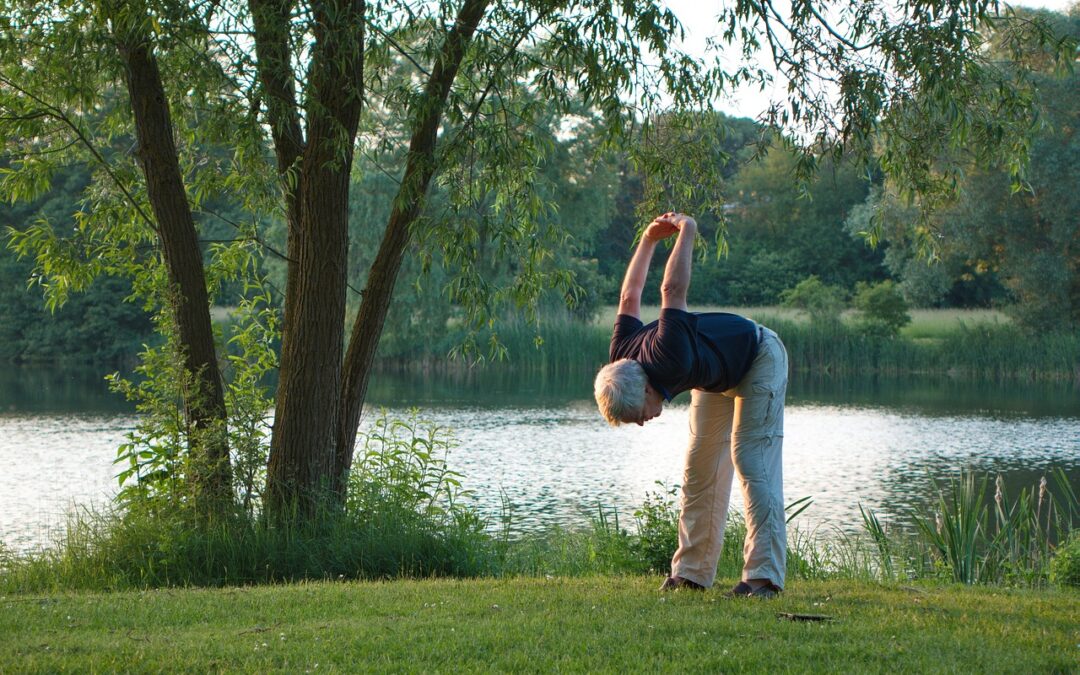Blog Outline
- Defining Low Impact Exercises
- Importance and Relevance
- Global Impact
- Economic Implications
- Real-Life Example
- Types of Low Impact Exercises
- Pros and Cons
- Overcoming the Cons
- Key Takeaways
- Conclusion
Staying active is essential at any age, but engaging in low impact exercises for older adults can make all the difference in maintaining health and independence. As we age, our bodies undergo changes that can make high-impact activities challenging or even risky. This article explores the benefits of low impact exercises for older adults and provides practical tips to help you begin incorporating them into your routine.
Defining Low Impact Exercises:
Low impact exercises are activities that minimize stress on the joints and muscles by keeping at least one foot on the ground or utilizing supportive environments like water. These exercises are designed to be gentle on the body while still providing significant health benefits.
Importance and Relevance:

Source: WHO physical inactivity rates
According to the World Health Organization (WHO), 31% of adults and 80% of adolescents worldwide do not meet the recommended activity levels, highlighting the global concern of physical inactivity. For older adults, staying active is crucial to prevent health decline and maintain quality of life. Regular physical activity reduces the risk of chronic conditions like heart disease and diabetes. It also enhances mental well-being by reducing stress, anxiety and improving mobility through increased strength and flexibility. Using low-impact exercise machines like ellipticals, stationary bikes, or rowing machines can make workouts easier and safer for seniors.
Global Impact:
The WHO has set global targets to reduce physical inactivity by 10% by 2025 and 15% by 2030, emphasizing the need for accessible exercise options like low impact activities. Addressing physical inactivity is a collective effort to reduce the global burden of non-communicable diseases, not just an individual health concern.
Economic Implications:
Physical inactivity could cost public health care systems approximately US$ 300 billion between 2020 and 2030 if not addressed. By engaging in regular physical activity, older adults contribute to lowering healthcare costs and alleviating the economic strain on healthcare systems.
Real-Life Example:
A compelling case study shows how low-impact exercises improve physical and cognitive health in older adults, based on systematic reviews and studies.
An elderly woman, aged 75, had been experiencing decreased mobility, mild depression, and a general decline in health due to sedentary behavior. After integrating low impact strength training exercises like light resistance band workouts and water aerobics into her routine, she observed significant improvements. Her mobility increased, depressive symptoms decreased, and she regained confidence in performing daily activities. This example underscores how low impact exercises can profoundly enhance the quality of life for older adults.
Detailed Exploration
Types of Low Impact Exercises
- Walking
- Benefits:
- Accessible and easy to incorporate into daily life.
- Enhances cardiovascular health and supports weight management.
- Tips:
- Start with short distances and gradually increase.
- Use supportive footwear to reduce joint stress.
- Benefits:
- Swimming and Water Aerobics
- Benefits:
- Water buoyancy reduces joint stress.
- Improves muscle strength and flexibility.
- Tips:
- Join a local swimming class tailored for seniors.
- Use flotation devices if needed for confidence.
- Benefits:
- Yoga and Tai Chi
- Benefits:
- Promotes balance, flexibility, and mental well-being.
- Reduces stress and the risk of falls.
- Tips:
- Look for classes specifically designed for older adults.
- Practice mindful breathing to enhance relaxation.
- Benefits:
- Cycling (Stationary or Outdoor)
- Benefits:
- Lowers impact on knees compared to running.
- Boosts heart health and leg strength.
- Tips:
- Use a stationary bike for safety and convenience.
- Adjust the seat and handlebars for comfort.
- Benefits:
- Pilates
- Benefits:
- Focuses on core strength and stability.
- Enhances posture and coordination.
- Tips:
- Start with beginner classes.
- Use modifications and props as needed.
- Benefits:
Pros and Cons
- Pros:
- Joint-Friendly: Minimizes wear and tear on joints, making it suitable for those with arthritis or joint pain.
- Improves Balance and Flexibility: Reduces the risk of falls, a common concern for older adults.
- Enhances Mental Health: Exercise releases endorphins that improve mood and reduce symptoms of depression and anxiety.
- Cons:
- Lower Calorie Burn: May not be as intense as high-impact workouts, potentially leading to slower weight loss.
- Requires Consistency: Benefits are seen over time with regular practice, which requires dedication.
Overcoming the Cons
- Combining Activities:
- Mix different low impact exercises to keep routines engaging and work different muscle groups.
- Intensity Modification:
- Increase duration or add light weights to boost calorie burn and improve strength.
- Set Achievable Goals:
- Track progress to stay motivated. Setting small, attainable goals can lead to long-term success.
Key Takeaways:
- Prioritize exercises that promote joint health, balance, and flexibility.
- Consistency and variety enhance the benefits of low impact workouts.
- Older adults play a crucial role in global initiatives to reduce inactivity rates by staying active and setting an example for others.
Conclusion
Low impact exercises offer a safe and effective way for older adults to stay active. They provide numerous health benefits, including improved cardiovascular health, enhanced balance and flexibility, and better mental well-being. Addressing physical inactivity is crucial not only for individual health but also for reducing global healthcare costs and meeting international health targets.
Embrace these exercises to improve your health and enjoy a more active lifestyle. You can experience significant improvements in your physical and mental well-being. Consult with a healthcare provider before starting any new exercise routine to ensure it’s safe and tailored to your specific needs. Taking this step can help prevent injuries and maximize the benefits of physical activity.

